St. Michael and the Devil
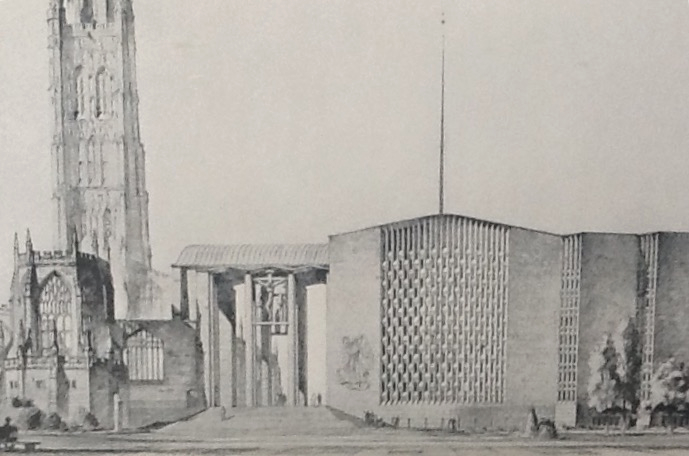
St Michael and the Devil – Statue by Jacob Epstein
From the steps leading up from Priory Street the first thing you notice, besides the magnificent new cathedral building, is the bold and striking sculpture depicting the triumph of Archangel Michael over the Devil. Like a large brand name or logo it tells everyone that this is the Cathedral of St. Michael and that both buildings together are one. Right from the start Basil Spence’s intentions were for a large sculpture to be here at the entrance, overlooking the steps – big and bold.

An early model of the Cathedral.
It was Basil and Bishop Neville Gorton who suggested that Jacob Epstein should be the chosen artist. They had seen other work by Epstein, for example his Virgin Mother and Holy Child for the Convent of the Holy Child in Cavendish Square, London. The suggestion did not go down very well with the Reconstruction Committee: one member even remarked ‘But he is a Jew!’, to which Spence replied quietly, ‘So was Jesus Christ’.
Jacob Epstein had always wanted to do a sculpture of St. Michael and he was very keen to start, but the committee made him do a maquette – a small model about 18 inches (450mm) high – which was something of an insult for such a prominent artist. The reason for this was that the Reconstruction Committee had a problem with Epstein: he had been very controversial for most his life.
Born in New York to Polish Jewish parents, he never lost his American twang so sometimes he could sound to English ears like a gangster, and a lot of his work created a stir. For example for his first commission he created 18 statues for the new British Medical Association building on the corner of the Strand and Agar Street, London (now Zimbabwe House). For this medical context Epstein created 8 foot high statues of naked men and women to represent the ages of man, to stand on each side of the building’s windows. They included sculptures such as an old woman cradling a baby. Finished in 1908, the press and public were outraged: the sculptures were too sexual and too ugly. Thirty years later the building was bought by the Rhodesian High Commission which decided the statues were inappropriate to their use of the building, and effectively destroyed most of them with the excuse that bits were falling off owing to weathering of the Portland stone. A builder was sent up to tap or bash each part of the sculptures to see how safe they were, thereby removing the offensive parts. The vandalism can still be seen today, even though Epstein volunteered to repair the statues himself.

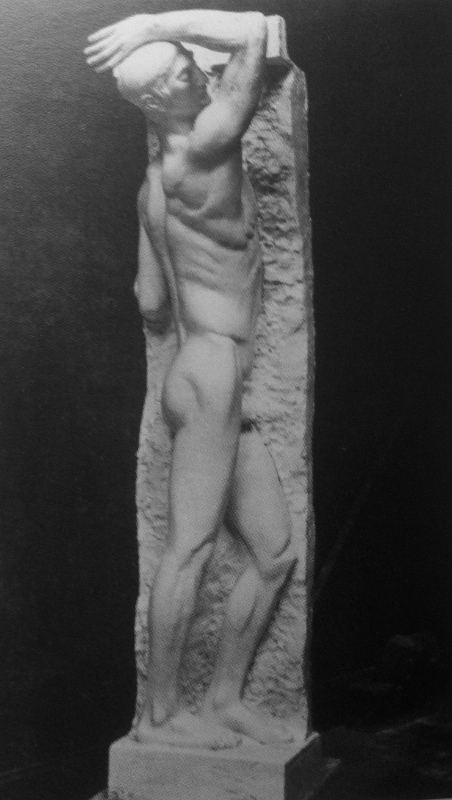
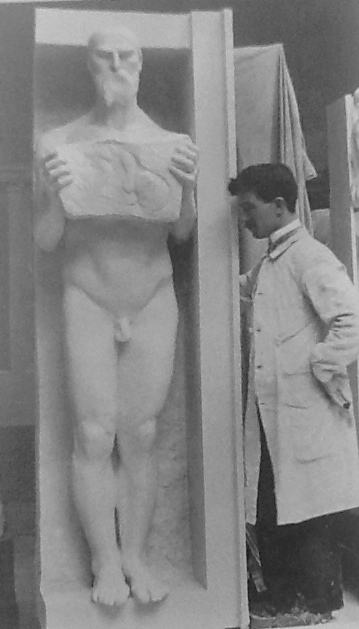
Epstein with one of the 18 figures he made for the British Medical Association Building.
Also controversial was Epstein’s second commission, the tomb for Oscar Wilde that he made for Pere Lachaise Cemetery in Paris in 1914. Epstein was influenced by the sculptor Eric Gill and by Wilde’s poem ‘The Sphinx’ and so controversial was the sculpture that for a long time it was covered over by a tarpaulin because of its nakedness, until a bronze butterfly was placed over the offending area. Furious that the monument had been altered without his consent, Epstein refused to attend the unveiling in early August 1914 but it raised little public interest – the press were by then more interested in the outbreak of the First World War.

What is amazing is that a year earlier Jacob had made a sculpture called Rock Drill, a machine-like robot, armed and menacing. It was first displayed in Brighton 1913. This sculpture was predicting the future of the machine gun and the machine age war that was to come in the First World War. You would not believe this statue is over a hundred years old; it looks like a Star Wars villain, violent and threatening.
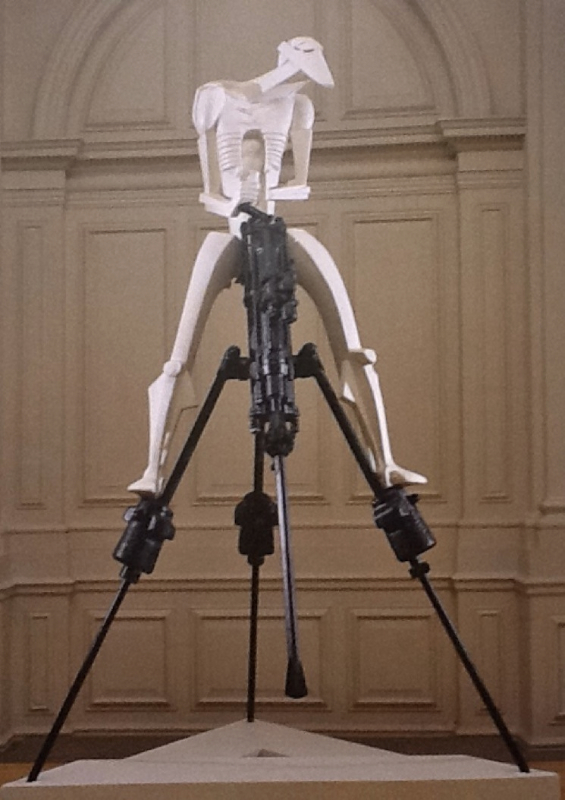
As for the Cathedral, nothing had been heard from Jacob Epstein for months on the progress of the ‘maquette’. In the interim, Bishop Gorton had died and the new Bishop was Cuthbert Bardsley. Luckily he was very interested in art and a painter of landscapes in oil himself. Bishop and Provost had a chance to see the ‘maquette’ when they went to visit him. But Epstein had not only finished the ‘maquette’, he had started on the full-size figure: St. Michael’s head and part of the torso were already finished. Luckily the Bishop and Provost both praised it, taking photographs back to the Reconstruction Committee. They were able to persuade the Committee, and Jacob’s commission was approved in 1956.
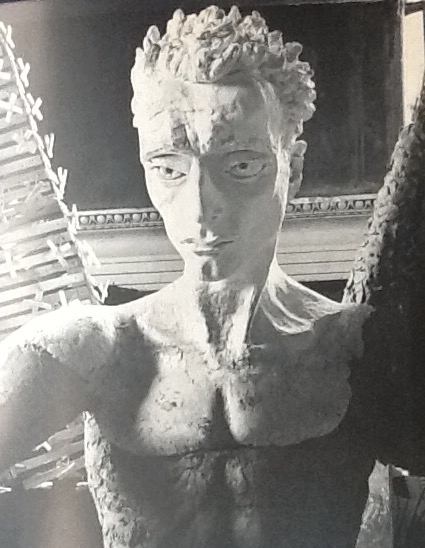
While working on the sculpture, Jacob used two different models for St. Michael, both of them husbands of his daughter Kitty. She was married twice, first for five years (between 1948 and 1953) to the artist Lucian Freud, and secondly to the economist Wynne Godley. It’s interesting that Jacob did busts of both of them, but it is Wynne who is St. Michael. It’s said the Devils face could be Jacob’s himself playing the baddie, pulling faces into a mirror. This work of art was one of the last major works Jacob produced: he died on 21st August 1959. The sculpture was cast in bronze and unveiled on the cathedral in 1961 by his wife Kathleen, who also donated the angel door knobs for the Cathedral which Jacob had modelled on his grandchild.
The model for Satan was a friend of Epstein’s called Gordon Bagnall Godfrey. He had a very pronounced chin and therefore a somewhat striking face. Despite his unprepossessing appearance he was said to be a very charming man.

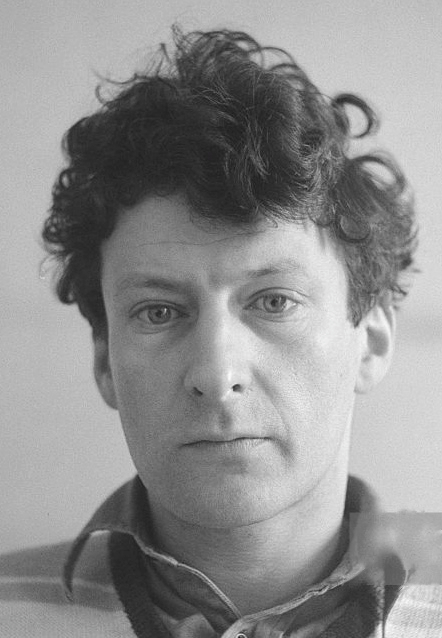
Lucian Freud
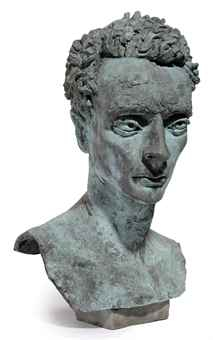
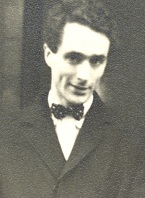
Wynne Godley
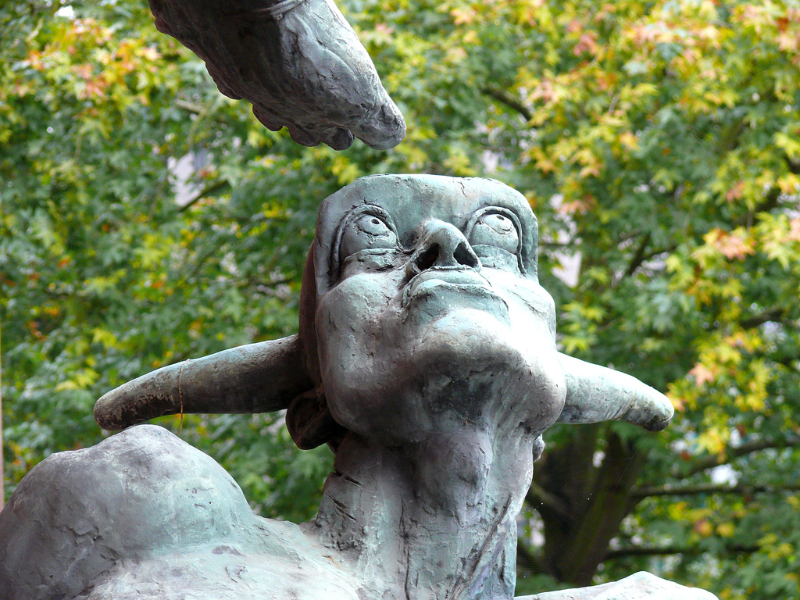
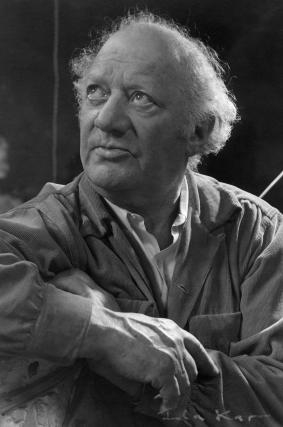
Jacob Epstein
